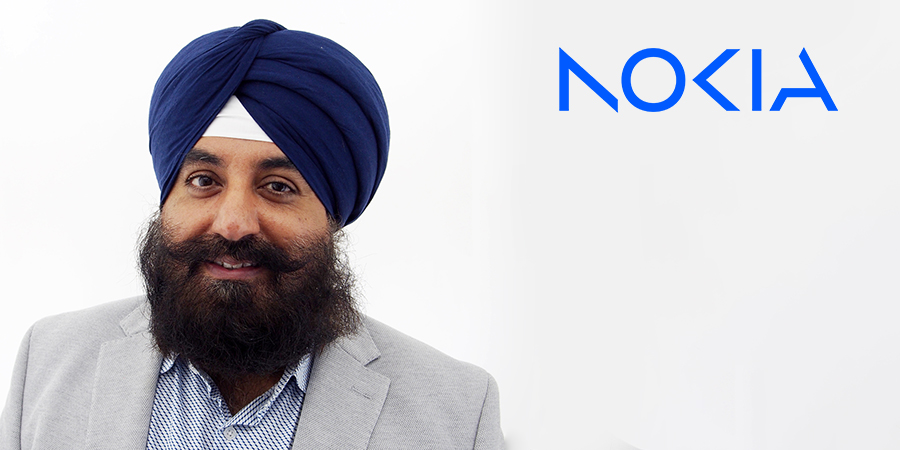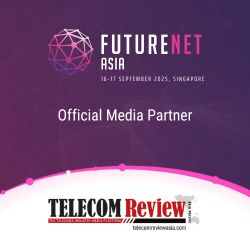During an insightful discussion with Telecom Review Asia, Arvinder Khanna, Pre-Sales Applications and Networks Leader for APAC at Nokia, offered an in-depth exploration of Nokia’s groundbreaking initiatives. With over two decades of expertise in CSP software delivery and architecture, Arvinder explained how Nokia’s progress in AI and security is transforming the telecommunications industry.
How is Nokia’s focus on AI-enhanced 5G security shaping the future of both mobile and cloud-based network services? What key benefits does this transformation bring to the overall telecom ecosystem?
Nokia’s commitment to AI-enhanced 5G security is fundamentally transforming the landscape of both mobile and cloud-based network services. Through our NetGuard Cybersecurity Dome solution, built on an XDR architecture, we harness the power of AI and machine learning to enhance the security posture of 5G networks, ensuring they are not only more secure but also more resilient against the ever-evolving cyber threats we face today.
One of the key advantages of our approach is proactive threat detection. By continuously monitoring network traffic, our AI-driven systems can identify and respond to potential threats in real-time, significantly reducing the risk of breaches. This proactive stance is crucial for maintaining the reliability and security of both mobile and cloud services.
Moreover, the automation capabilities of our solution greatly enhance operational efficiency. By automating many routine security processes, we streamline threat management, allowing our telecom partners to allocate more resources towards innovation and service enhancement rather than just security maintenance.
Our AI-enhanced security also bolsters the overall resilience of 5G networks. As these networks grow and become more complex, the ability to adapt to and neutralize new threats in real-time is vital to ensuring uninterrupted service. This resilience is a cornerstone of our strategy to secure the entire telecom ecosystem.
Furthermore, our solution is designed to protect the ecosystem at every level—from the core network to the edge, including IoT devices and cloud services. This comprehensive protection fosters greater trust and confidence among users and stakeholders, which is essential in today’s interconnected world.
Finally, scalability is another critical benefit. As 5G networks expand, our AI-enhanced security solution scales seamlessly to meet increasing demands, ensuring robust protection regardless of the network’s size or complexity.
In summary, Nokia’s focus on AI-enhanced 5G security is not just about addressing today’s challenges—it’s about future-proofing the telecom ecosystem, ensuring that as we move forward, our networks remain secure, efficient, and resilient.
What role do Nokia’s strategic partnerships play in advancing AI, analytics, and cloud solutions for privacy-preserving telecom security, and how do these collaborations influence the deployment of secure, scalable network services?
Strategic partnerships are central to Nokia’s approach in advancing AI, analytics, and cloud solutions for privacy-preserving telecom security. In today’s rapidly evolving digital landscape, no single company can address all the complexities of telecom security alone. That’s why we’ve forged strong alliances with industry leaders, technology innovators, and academic institutions to drive forward our vision of secure, scalable network services.
Through these collaborations, we combine our expertise with the specialized knowledge and capabilities of our partners. This synergy accelerates the development of cutting-edge AI and analytics solutions that are at the core of our security offerings. For instance, by working closely with cloud service providers, we can seamlessly integrate our security solutions into cloud infrastructures, ensuring that data privacy is preserved without compromising performance.
Our partnerships also play a crucial role in advancing the deployment of secure network services at scale. By leveraging our partners' strengths, we can rapidly deploy and scale our solutions across diverse network environments, from core to edge. This ensures our customers benefit from robust security measures that are both scalable and adaptable to their specific needs, whether they operate in traditional telecom environments or adopt next-generation cloud-native architectures.
Moreover, these collaborations allow us to stay ahead of emerging threats by fostering innovation and knowledge sharing. Working with leading AI and cybersecurity experts enables us to continuously refine our solutions, incorporating the latest advancements in threat detection, response, and mitigation. This collaborative approach not only enhances the security of our solutions but also ensures they are future-proofed against the evolving threat landscape.
In essence, our strategic partnerships amplify our ability to deliver privacy-preserving telecom security that is both cutting-edge and scalable. These collaborations are integral to our mission of providing secure, reliable network services that meet the demands of today and the challenges of tomorrow.
How is Nokia integrating AI, cloud-based solutions, and Network as Code into its technology portfolio, and what are the anticipated benefits and challenges for network operators, application developers, and end users?
Nokia is fully leveraging AI, cloud-based solutions, SaaS, and Network as Code in all facets of value creation for its customers. We provide flexibility by offering solutions that work seamlessly with the customer's cloud infrastructure of choice while maintaining the same level of performance and reliability. In addition, By offering a SaaS-based delivery option Nokia is able to assist CSPs to accelerate their ability to launch new services faster and see “time to value” quicker. AI-powered solutions enable customers to leverage predictive analytics and closed-loop automation, paving the way toward Autonomous Networks. This not only optimizes the network but also enhances the customer experience.
Last, Nokia's Network as Code platform brings together networks from around the globe, along with systems integrators and software developers, into a unified ecosystem. This platform aims to simplify network complexities by abstracting them and exposing developer-friendly interfaces.
All participants within this dynamic ecosystem stand to gain: CSPs extend developer access to their network attributes, developers craft novel application experiences, and enterprises unveil innovative products and services. This synergy empowers CSPs to fully unleash the potential of their network through strategic collaborations with application developers, ushering in pioneering Industry 4.0 and consumer use cases.
With 5G, ensuring a superior user experience and effective monetization has always been a key concern for operators and service providers. Network as Code offers a digital ecosystem that allows IT and application developers to leverage the vast amount of information available in the network, providing the best possible user experience. Furthermore, with the introduction of new use cases and services, new revenue streams can be realized, offering service providers the opportunity to monetize and build a solid business case for 5G investments.
In terms of challenges, harmonizing the various elements and players within the digital ecosystem to deliver optimal performance and outcomes that exceed customer expectations remains crucial. Individual elements may have different levels of readiness and compatibility, so it is Nokia's challenge to ensure all components are aligned, deployed, and tested to achieve the highest quality possible.
What upcoming AI, cloud, and network innovations are you most excited about? Do you foresee these developments enhancing both network security and the agility of next-generation connectivity services?
Generative AI (Gen AI) complements and enhances traditional AI capabilities with three main pillars: multimodal enhancements, digital twins for higher-order reasoning (e.g., what-if analysis, scenario planning), and open-source large language models (LLMs) and frameworks. This enhances autonomous decision-making with assistive reasoning, thereby bringing Level 4 (L4) and Level 5 (L5) autonomous networks closer to commercial reality.
While traditional AI excels at handling rules-based, structured data (such as time series and tabular data), GenAI manages unstructured data. GenAI can function as an AI assistant in various functional roles—operations, sales, and customer service—focusing primarily on natural language interaction with multimodal enhancements.
GenAI helps simplify highly complex networks and operations into more straightforward natural language prompt engineering. This enables macro-level business intent to be translated into service intent, and then into complex network engineering and management actions. This significantly speeds up decision-making, driving time-to-value for all network investments.
At Nokia, we have already integrated Microsoft Copilot into our NetGuard Cybersecurity Dome solution, where natural language prompts allow security analysts to validate perceived network vulnerabilities and security threats in real time and to trigger proactive and reactive security actions.
GenAI assistants can also be utilized with Nokia AVA Data Suite, the most comprehensive data management platform available today for Communication Service Providers (CSPs). It provides a single source of truth for all network, services, and customer-centric data. Any role—whether in operations, customer service, sales, or management—can now use Gen AI to generate real-time dashboards and reports based on any combination of available data sources, enhancing observability, predictive analytics, and driving closed-loop automation across the entire network.






